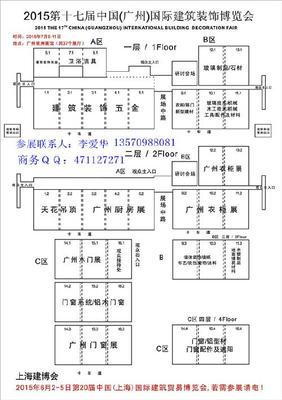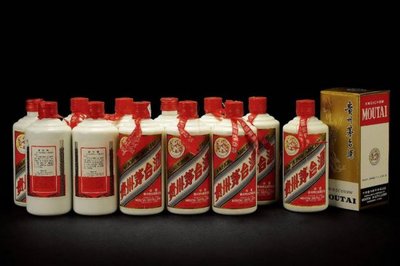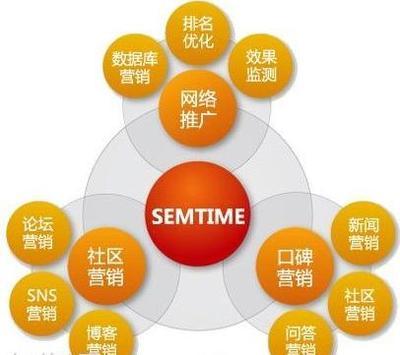At times, one is astonished by how little appreciation there is for the concept of food security in the affluent world. In the midst of plenty, there is a tendency to forget what hunger means and how it afflicts millions of impoverished people in many parts of the world. In the historical famine of 1984-1985 in Ethiopia, also called the Great Famine, about one million people died of starvation and many of those deaths could have been prevented. The Great Famine was the worst of its kind in Ethiopian history. It also left a scar on world history. The rest of the world was criticized for its apathy in not providing sufficient aid in time. Ever since, the issues of hunger, poverty, and malnutrition have stayed on top of the global agenda.
Food Security in the Pre-Reform Era
How has China made it possible to feed its enormous population and ensure continued availability, stability, and access to daily food? The Chinese say that “food is heaven.” Agriculture has over the centuries been China’s sole, limitless industry. Many rituals are woven around harvest, invoking the divine for a bumper crop. Food security continues to occupy center stage in the national socio-economic planning, as the single most delicate issue to Chinese policy makers. It is also extremely sensitive, because any significant changes in China’s agricultural production directly impacts the rest of the world, which remains watchful of China and closely monitors its ability to grow enough food for its population.
To better appreciate China’s miraculous achievements in the agriculture sector, it is interesting to look at it in the backdrop of pre-reform agricultural policy that led to serious food crisis in the 1950s and 1960s. Hunger and famine haunt the Chinese people, as the country has been afflicted with recurrent famines in its history. The “Great Leap Forward” of 1958-60 is regarded as one of the most tragic man-made disasters, resulting in the death of approximately 23 to 30 million lives. Following this spectacle of human suffering, another dark chapter in Chinese history unfolded. Mao Ze Dong’s decade long Cultural Revolution (1966-76) led to widespread social, economic and political upheaval of enormous proportions which brought the Chinese society to the brink of civil war. The agriculture sector, like the rest of the economy, was thrown into a crisis, unable to keep up with the growing population. Of 800 million farmers, 250 million were considered absolutely poor. The nation could not achieve self-sufficiency in grain and required massive imports to stave off starvation.
Poor agricultural policy and inefficient agricultural collectives with an unfair pattern of holding resources greatly contributed to low productivity and production. Agriculture stagnated for two decades (1957-78) and due to persistent shortages, rationing had to be continued.
1978 Agricultural Reforms – an Era of Rural Prosperity
Through two decades of shortages, rationing, and starvation that food security became a precursor of market-oriented reforms. The turning point came in 1978, when Deng Xiaoping initiated economic reforms, which opened China’s economy to the outside world. It is estimated that more than 100 million people suffered from recurrent food shortages resulting in severe stunting, leading to diminished capacity for work and higher incidence of morbidity. Deng Xiaoping’s pragmatic reforms put China on the fast track of prosperity unrivaled in its modern history. Agriculture became the engine of growth. It lifted the nation out of chronic food shortages and widespread malnutrition.
Deng Xiaoping has defined for himself a place in history, being the engineer of 1980s economic reforms that provided an environment in which Chinese could maximize their incomes and freely make money, a previously sacrosanct endeavor. The miracle of the early 1980s in agriculture was the product of far-reaching changes in socio-economic policy brought about by well-conceived re-distribution of country’s farming land, best known as Household Responsibility System (HRS), which revised thirty years of vested interests in a mere five years. After the beginning of land re-distribution, although land still belonged to the State but with peasants free to plant crops and to breed animals as they wished, China had already attained average per capita food availability of 2,700 kcal/day. The HRS unleashed the untapped potential of the peasantry and offered incentives to produce more. An individual household would pay a fixed amount to the government and keep the rest for its own consumption and still bring the surplus to the market. Bumper harvests of oil crops such as rapeseed, peanuts, soybeans, and sunflower led to dramatic increase in incomes and visible improvement in quality of lives of rural populace.
The abundance of production, led to China’s position as both the world’s largest producer of meat, pork, and aquatic products as well as a primary consumer. China doubled its meat output and quadrupled its aquaculture production in a decade.
The highest grain harvest in post-reform era was recorded in 1984 and the following year, the country actually became a net exporter of food. Although all food rationing was eventually abolished, malnutrition persisted in the remote areas with poor infrastructure and harsh climate. But, it could be easily argued that such inequities must be expected in any country of that size and at that stage of development. According to a Harvard Medical School study, even in the United States, hunger, defined as a chronic shortage of nutrients needed for growth and good health, affected about 12 million children and eight million adults during the late 1980s.
No doubt, China’s efforts in fighting hunger and malnutrition have been spectacular. Underweight prevalence in children under five was reduced by more than half from 19 percent in 1990 to just less than seven percent in 2005. The under–five mortality rate also sharply dropped from 49 per 1000 live births in 1990 to 31 in 2004. The country reduced the percentage of its population classified as hungry by a third in a single decade.
China has significantly improved the availability of and access to food through a combination of a sound agricultural policy that has led to a gradual liberalization of the sector, the development of rural infrastructure, and investment in research and development in agriculture. In this liberalized set-up, efficiency rather than only equity was the key. The excellent infrastructure developed in the 1990s played a key role in improving food security as a whole, since it allowed for the timely movement of commodities between provinces and between food surplus and food deficit areas. The fact that China has instituted research centers in virtually every county to work on development of high yielding varieties of crops has also been another major contributing factor in increasing food production. The reforms led to huge gains for agriculture opening up a new era of prosperity for the Chinese people unknown in recent times.
Poverty Alleviation and Food Security
China’s achievements in poverty reduction have also greatly contributed to improved national and household food security. It is invariably the poor who are food insecure. Nearly two thirds of Chinese populations were classified as poor in the late 1970s according to the World Bank standard of a dollar a day. Since 1978, and as a result of market reforms, the number of impoverished people without enough food and clothing has declined from 250 million to 26.1 million in 2004, with the share of the population living in poverty falling from 30 percent to 2.8 percent. China has already achieved the first Millennium Development Goal of halving poverty ahead of 2015. At the same time, conditions for economic activity as well as living conditions in poverty-stricken areas have greatly improved.
Based on a Study by IFPRI, by 2004, the share of villages’ access to roads, electricity, and television reached 77.6 percent, 95.1 percent, and 87.8 percent, respectively for 592 counties earmarked as poor. [4] This is another visible sign of rural prosperity.
According to the World Bank Development Report 2007, there are many success stories of agriculture as an engine of growth and a major force for poverty reduction. The Bank cites China as a model for the developing world, where the majority of the poor live in rural areas and survive on agriculture as the only source of livelihood. Most recently, China’s rapid growth in agriculture, thanks to the HRS, the liberalization of markets, and rapid technological change, has been largely responsible for the decline in rural poverty from 53 percent in 1981 to 8 percent in 2001. Agricultural growth was the precursor to the acceleration of industrial growth, very much in the way agricultural revolutions predated the industrial revolutions that spread across the world from England in the mid-18th century to Japan in the late 19th century.
China has revolutionized its agriculture at the same time that it is redefining itself and its position in the world. The China of today is not the same China of even a generation ago. Per capita income has doubled twice in two recent and successive decades (1978-1996). By contrast, it took the United Kingdom 58 years (1780-1838) and the United States 47 years (1839-1886) to double per capita income just once. It is due to China’s agriculture that has participated in this phenomenal growth, at a rate of 6 percent per capita for two full decades.
The determination to forge ahead was recently reiterated by the Chinese President Hu Jintao at the 17th Party Congress when he declared, “We will quadruple the per capita GDP of the year 2000 by 2020 through optimizing the economic structure and improving economic returns while reducing consumption of resources and protecting the environment.” China is now poised to be the world’s fourth largest economy after the United States, Japan, and Germany.
With New Futures Come Challenges
Shrinking Arable Land
According to a survey by China’s Ministry of Land and Resources, China lost 8 million hectares or 6.6 percent of its arable land in the past decade. As of November 2005, China had approximately 122 million hectares of arable land, covering 13 percent of its territory. This amounted to 0.27 hectares per capita, less than 40 percent of the world per capita average, one-eighth the United States, and one half of the Indian level.
Several major factors are contributing to the land loss. In eastern China, a booming economy and growing urban population have increased the use of arable land for construction purposes.
In China’s west, the government has promoted restoration of degraded or fragile ecosystems. Lower quality lands have been appropriated for forest or grassland planting efforts. This has been the dominant driver for the loss of arable land in the west.
Rapidly degrading land quality is adding to the problem. Most of the land being lost to commercial activity and construction in eastern China is higher quality land. This has changed the over-all make-up of the country’s remaining arable land; only 28 percent is high–yielding, while 32 percent is low yielding. With the current acreage, it would not be easy to guarantee country’s grain security.
Environmental Degradation
Trends in environmental degradation, including soil erosion and salinization coupled with the loss of cultivated land, results in considerable stress on the agricultural land base. Erosion and salinization have increased since the 1970s. According to statistics, one sixth of China’s arable lands are polluted by heavy metals and more than 40 percent are degenerated due to soil erosion and desertification.
In parts of northern and western China, deserts have advanced to the point that they are beginning to merge. Some 360,000 hectares of land becomes desert each year. In Xinjiang Province, the huge Taklamakan and the smaller Kumtag deserts are approaching each other and are headed for merger. On the southwestern edge of Inner Mongolia, the Bardanjilin desert is moving toward the Tengry desert. As for suffering on human scale, the suffocating dust storms of late winter and early spring affect some 400 million Chinese.
China’s industrial and urban expansion is causing widespread environmental pollution. China is ranked as the world’s number one consumer of coal and produces more SO2 and particulate matter than all of Europe. SO2 contributes to respiratory illness in humans. SO2 and nitrogen oxide react with other substances in the air to form acids, which fall to earth as rain, fog, snow or dry particulates. Some may be carried by wind for hundreds of miles. Acid rain damages forests and crops, changes the make-up of soil, and makes lakes and streams acidic and unsuitable for fish. Continued exposure over a long time changes the natural variety of plants and animals in the ecosystem. More than 80 percent of its wastewater is discharged without treatment. Water pollution affects soil quality and crop yields. Degradation of ecosystems also causes soil erosion, silting of reservoirs and irrigation canals, and frequent flooding due to reclamation of wetlands and filling of lakes. Environmental pollution and degradation of ecosystem are causing huge losses to the Chinese economy.
Water
Irrigation has played a critical role in establishing highly productive agronomic systems in China. The proportion of cultivated area under irrigation increased from 18 percent in 1952, to a level at which half of all cultivated land in China was irrigated after early 1990s. However, rising demand for domestic and industrial water use poses a serious threat to irrigated agriculture, to the future food security and well being of people in the northern region. Water shortages in China, especially in the North China plain and the Northwest part of the country, have become more acute over the last two decades. Weather records show that droughts have risen and precipitation is low. With intensified farming and non-farm uses of water, the water table has declined rapidly and many rivers stop flowing during the dry season.
In some parts of Central and South China, both surface and underground water have been polluted. The problems have reduced water availability to both farm and non-farm users.
Besides shortage, uneven distribution of water is another major resource constraint to China’s agriculture. China is listed amongst those countries that suffer from severe water shortage. The cultivated land in the North of Yangtze River accounts for 65 percent of the gross but the water resource available for agriculture is only 20 percent of the whole. Water shortage is a major limitation to agricultural production in the North, with recurrent droughts. On the other hand, massive monsoon rains from June to September lead to severe flooding. The share of water apportioned to agriculture decreases every year. Evidently, water supply to agriculture may be impossible to increase. According to a study, with the Chinese population reaching 1.6 billion in years 2030, it may require grain production of 640 million tons. Such a scenario depicts an alarming state of water constraint and may affect China’s future agricultural production and food security.
World View of China’s Food Security
China’s food security is a matter of continuing debate and global speculation. Questions have been raised about China’s prospects of growing enough food to satisfy the country’s expanding requirements. This raises the question of sustainability, as Chinese people, with expanding economy and increased prosperity, are changing their traditional dietary patterns while at the same time adding the equivalent of one Australia to its population every year. Therefore, one tends to question with serious apprehension China’s ability to feed 1.3 billion people on a mere 7 percent of world’s arable land. These apprehensions are based on events of China’s pre-modem history as well as developments of the 20th century.
For centuries, wise men have been predicting global famines. Thomas Malthus argued 200 years ago that the growth of population must outstrip that of food supplies. In 1968, Gunnar Myrdal, a Swedish economist, declared that India would have trouble feeding more than 500 million people. So far, they have been proven wrong by world events. Lestor Brown, President of Washington’s Worldwatch Institute, sounded the most recent alarm in the spring of 1994. He argued in his article “Who will feed China,” that China’s grain output has already reached its peak and would only go down, declining by at least 20 percent by the year 2030. As China’s economic growth moves up the food ladder, demand for more meat, requiring more feed grain and also more plant oils and sugar rises while China’s huge population keeps increasing. Brown argued that as the country loses its arable land, runs out of irrigation water, and exhausts opportunities for further major yield increases, it will not be able to satisfy the resulting demand through domestic production. Consequently, a richer China, trying to make up its food deficit by rising imports, will put unbearable strain on the global grain export capacity, will push up worldwide prices of nearly all major commodities, and make food expensive for everyone.
Given the limited capacity of major grain exporters in North America, Australia, and Europe, Brown argued that major exporters would have to put limits on foreign sales. Yet, in 1995, in another article “Wake-up call for Small Planet” Brown amplified his dismal scenario.

The Chinese took Brown’s comments very seriously. His writings led to a vigorous debate on whether China can feed itself with its own production or whether it will have to import a large amount of grain from the international market. The latter would lead to higher global prices and, therefore, harm many of the world’s poorest countries and people. From the beginning, the Food and Agriculture Organization of the United Nations participated in this debate. According to a scientific study by Huang, Rozelle, and Rosegrant in 1997, based on empirical data, contrary to Brown’s claim, China will not starve the world and China’s rapid development can actually help the poor across developing countries.
While working in Sichuan province, I was impressed by the results achieved through incentives offered to the farmers. In 1995, under FAO’s flagship program called Special Program on Food Security (SPFS) for Low income Food Deficit Countries (LIFDCs), I launched a project on food security in Mingxing and Biamamiao villages in Sichuan Province, which generated economic returns of 14 to 20 percent and dramatically increased the incomes of the farmers in both the villages dramatically increased. The positive environmental impact of the project included improvements in irrigation and drainage facilities, controlling water logging, improving soil structure, reducing soil erosion, better terracing, afforestation, and a balanced use of fertilizers and pesticides through integrated pest management. The Chinese model of Sichuan is being successfully replicated in over 105 member countries of FAO. The Chinese farmers responded to the incentives, which led to the phenomenal success of the program. This is exactly what happened in 1978 when Deng Xiaoping’s market reforms unleashed their potential and enriched the farming community.
Conclusion
The current unprecedented rise in energy costs is expected to cause further increase in fertilizer prices. In poor countries, the more expensive fertilizers are likely to go beyond the means of small farmers. This could reduce farm yields and incomes worldwide. On top of this, the recent upsurge in food prices in world commodity markets is giving rise to a new dimension of hunger. A new wave of food price inflation is moving across the globe, leading to higher levels of hunger and poverty. There is also growing demand for food from emerging economies. Growing competition between bio-fuels and food poses another serious threat to global food security. This phenomenon will affect everyone and China, with its insatiable demand for oil and increasing consumption of variety of foods by its affluent class, will have to grapple with this new challenge as well.
In the Chinese language, the word food also denotes uprising. To the Chinese leadership and its people, this serves as a constant reminder as to how vital food security is for economic and political stability. No one in the world will be more preoccupied with this challenge than the Chinese political elite. With its committed scientists engaged in innovative research, China can easily meet this new challenge with improvements in developments of new high yielding varieties of corn and rice, promotion of efficient use of inputs, and stepping up investments in cleaner environment. Given China’s track record and setting aside alarmist fears, technological advancements offer China limitless possibilities to feed its own people in the foreseeable future while also contributing positively to global food security and poverty alleviation.
 爱华网
爱华网


